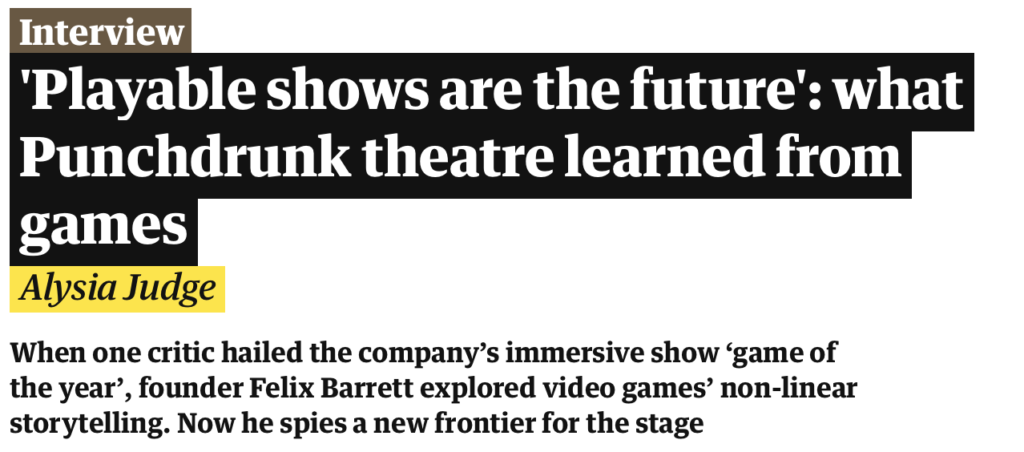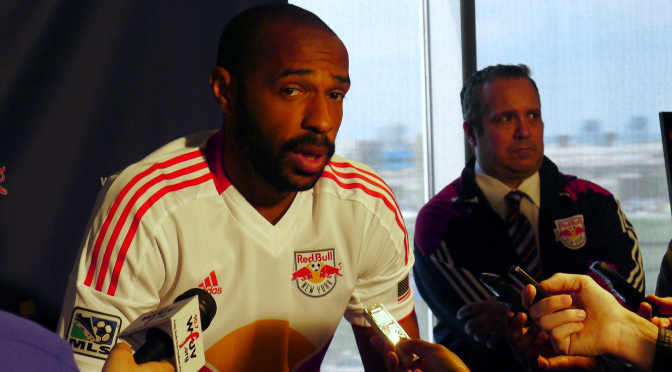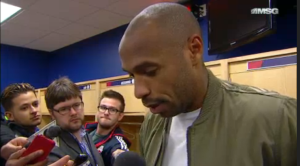This isn’t the post I thought would be the one to break my blogging silence, but it’s the one I need to write.
It was Sunday evening, and the perfect conditions were combining into a moment of perfect joy. The weather was spectacular. The venue, a 12th story rooftop in the heart of the city, gave us perfect views in every direction. There was barbecue, and drinks, and a few close friends up there with us. The USWNT was destroying Japan, my phone pulsing every few minutes with news of another goal.
And then, the subject turned to “The Friend”.
“Anybody hear of any leads on The Friend lately?”
“No, but did you guys know about this Tumblr…?”
While it’s far from the reason the friendship existed, there was a common bond among the group on the roof that evening: each couple had either been ripped off, or was close to someone who had been ripped off, by someone deep in the social circle that criss-crosses between NYC’s tech, food, and photoblogger communities.
The Friend disappeared from the Internet about two years ago – right after I got ripped off.
I’ve alluded to the incident in passing on this blog before, and I’ve thrown out a subtweet or two in frustration, but this will be the first – and potentially last – time I write about it at length. It’s hard to want to write about how foolish I was, how much of a sucker I momentarily became, and the negative impact that moment has had on me as a person. But the events of the last 72 hours have left me craving what little catharsis I can wring out of my own hands.
It was two years ago today that I got a text message from The Friend, threatening to throw themselves into the Gowanus.
The Friend, at this point, was someone I had known for over five years and considered extremely close. We chatted semi-regularly, saw each other on occasion at friends’ parties, and hung out when we could. In a city where you can easily go years without seeing friends, that’s a pretty good interaction rate.
The resulting IM conversation was, in hindsight, perfectly crafted. There was urgency: a client check bounced, a new place to live about to collapse. There was constant self debasement, declaring their life a failure. There was desperation about an amount of money that was neither huge nor insignificant. And in the end, an invocation of a friend I didn’t know, who had agreed to float half the amount in perfect timing with my growing inability to help.
I checked our finances. I checked with the wife. It was an amount we could live without but that we would certainly want back. So I agreed to float the other half.
My phone rang almost instantly – it should’ve been a red flag for a person who was notorious about never picking up the phone. But I was just happy to help. I wrote up a quick agreement (balance due in 30 days, failure to pay would allow the use of unspecified “further actions”), ran to the ATM, withdrew the cash, and met The Friend in the shadow of St. Paul’s Chapel. It was chosen for subway convenience rather than moral significance, but the detail is not lost on me.
The agreement was signed, the cash was handed over, we chatted briefly and everything was fine as we parted ways.
That was the last time I saw The Friend.
Three weeks later, as the due date set in, a text message conversation threw alert at me. While casually talking about meeting up (at which point I was going to gently remind about the debt), The Friend mentioned that they couldn’t meet for coffee because they were totally broke.
That would, in the end, be the last text message I would receive from The Friend.
My head tried to ignored the signs but my fingers fired off a reminder about the debt. There would be no answer.
As the debt hit the due date, more texts were sent. Emails fired off. Phone calls made and going to voicemail. Katie joined in, futile as it was. There would be no answer.
It was only days after the radio silence begun in earnest that I thought to ask mutual friends for leads, and non-mutual friends for advice. The responses sent my stomach to the floor.
“Oh no, not you too,” said more than one mutual friend.
“Is it The Friend?” said a non-mutual friend who I had spoken to in only generalities.
How could I have been so stupid?
The two years that followed became an attempt to put the incident out of mind, with occasional lapses into anger, dejection, and sheer disbelief.
Soon after, I reached out to the friend of The Friend who had allegedly floated the other half of the cash, which was of course not at all true. (He still apologized for a role he hadn’t intended to play in the deception.) I heard from a few other people who had been ripped off by The Friend, who had shared connections with me. Others had been hit for more, or in worse ways. I occasionally felt lucky that I hadn’t gotten it worse, which made me feel terrible.
The Friend went silent on social media. Occasionally there would be a sighting at an event, or on a mailing list, and I’d get a heads up from someone I had alerted. We investigated getting a PI or filing in small claims, and both were more costly than the amount we’d recover.
We hung the worthless agreement on our fridge, a sad reminder to not be so trusting and perhaps a hope that someday, The Friend might do the right thing. I felt myself pull back from putting a lot of trust in new friends. I became more cynical, more selective, less open to want to hang at length at social functions.
Every now and then, the incident would flare up at home, triggering arguments and anger at a circle of friends and acquaintances who had failed to warn us, failed to tell us not to trust The Friend. Of course, there’s no good way to have that discussion, no easy way to say something simultaneously essential and cruel. But it didn’t matter when the anger got the better of us. It would pass when other battles in life took priority.
About a year after the incident, another email would come in from someone who got burned badly by The Friend, asking to chat. They were thinking about setting up a Facebook group, or a Tumblr for fellow victims. About six months later, a Tumblr appeared, matching the emailer’s story. We found it, but didn’t think much of it.
Until this weekend, on that rooftop.
Monday morning, a friend from the rooftop posted a link to the Tumblr onto Facebook. The resulting thread ignited and burned strong for a day.
More victims appeared in the thread, nodding in agreement or expressing anger that nothing had ever been done to stop The Friend. Bewildered people who knew The Friend’s name went wide-eyed in disbelief. (A few people joked about how the thread had reunited so many people who hadn’t spoken in years.) And those who had known The Friend the longest, many of whom had been burned lightly and let it go, decried the public shaming of someone who had struggled with depression. They objected to witch hunts in a social community that was above it. They dubbed the Tumblr that had used questionable tactics in the battle for some form of justice or retribution as toxic.
(In case there’s any confusion as to why I’m not using The Friend’s name or linking to the Tumblr, it’s because multiple people took the stance that ruining The Friend’s reputation is worse than the crimes committed. While I whole heartedly disagree, I don’t want this to be about that – although I recognize the same argument that this is dehumanizing The Friend might apply.)
The only meaningful update was someone who had been in contact The Friend in January, indicating that they were now homeless and was in a “bad bad place” for having burned so many bridges.
When I read that, for a brief moment, I felt…well, not sad. Not happy either, but not terribly torn up about it.
And then I realized how much this had been eating away at me, and that all of this angst and pain and conflict inside me desperately needed a release.
The Facebook thread was taken down last night, smothered and stomped out before someone could dump more gasoline on it.
So here we are, two years past a threat to jump into the Gowanus that turned me into a fool. Allow me the following attempt at catharsis:
To the people who opted to defend The Friend on the grounds that public shaming is the wrong tactic, I understand and respect where you stand. We have all made mistakes, and no one wants their dirty laundry aired on the Internet. I would love a proper conversation with The Friend, a sincere apology, maybe even the money back. But two years of radio silence have sent the message that isn’t on the table. What you’re asking is for victims to not speak up, to sit back and just accept a crime being committed. I hope you can understand why I have such a hard time with that.
To the people who opted to defend The Friend on the grounds that their relationship was not a con or a swindle, I understand and respect where you stand. I thought the same thing, for as long as I could. I’m not even sure I can still bring myself to believe that it was intentionally a con. I just think it became convenient. I fear I became a relationship that was worth more to cash out than to keep. I hope you don’t become the same.
To the people who are harboring someone like The Friend in their social circles: speak up. Don’t assume your friends know about the damage they have caused. It doesn’t need to be vindictive, but it does need to be clear and up front.
To the person running the Tumblr, I understand and respect what you’re trying to do – and I wish someone had done it before I got taken advantage of. But I do wish you’d use better tactics, ones that wouldn’t compromise your message to those who can’t believe someone they hold close could be so awful.
To The Friend, I hope you get the help you need and can fix the damage you’ve caused in so many lives. And I hope you never do this to any one, ever again.
One of the things that makes the whole situation more complicated is that most of the social connections that drove this incident were triggered through social networking. It’s easy to find new acquaintances and friends-of-friends, to develop relationships.
The problem is, there’s rarely nuance to the connection on social networks. You follow on Twitter. You are friends on Facebook. You are a connection on LinkedIn. There aren’t labels on your social graph, no way to indicate that the connection may be waning or broken. You see a large number of mutual friends and you assume the person is on the up and up.
I, along with many others, have kept The Friend in my social network graph long after being burned. It’s out of a false hope that there will be a slip, a re-emergence, a tell that The Friend is still out there. Those slips have happened, but they’re ultimately worthless. It’s clear they’re hiding from more people than just me. Meanwhile, those connections in my graph become tacit endorsements – an opportunity to use me as a silent reference, vouching for their character. Now that I’ve wrung my hands, I just want to wash them clean.
With this post, I’ve unfriended The Friend on all the social channels I can think to. I don’t want that association hanging over my head. The margin utility of tracking isn’t worth the pain.
Time to move on.




